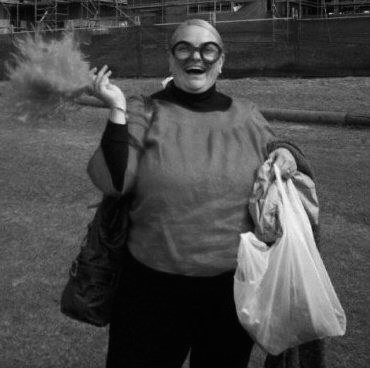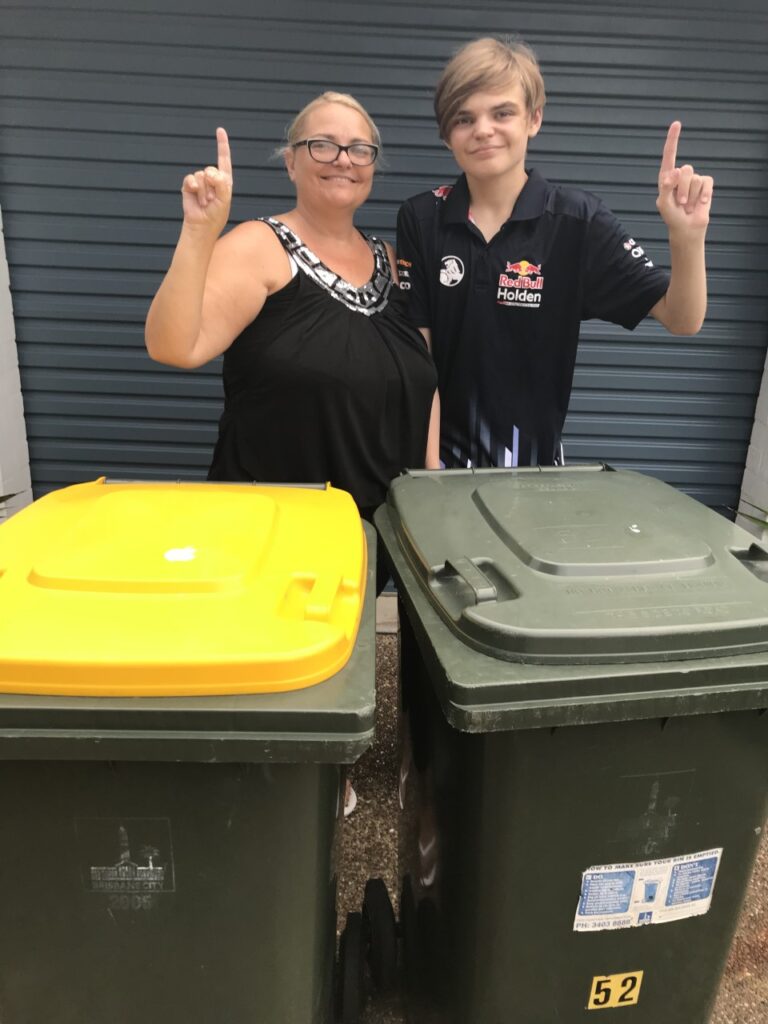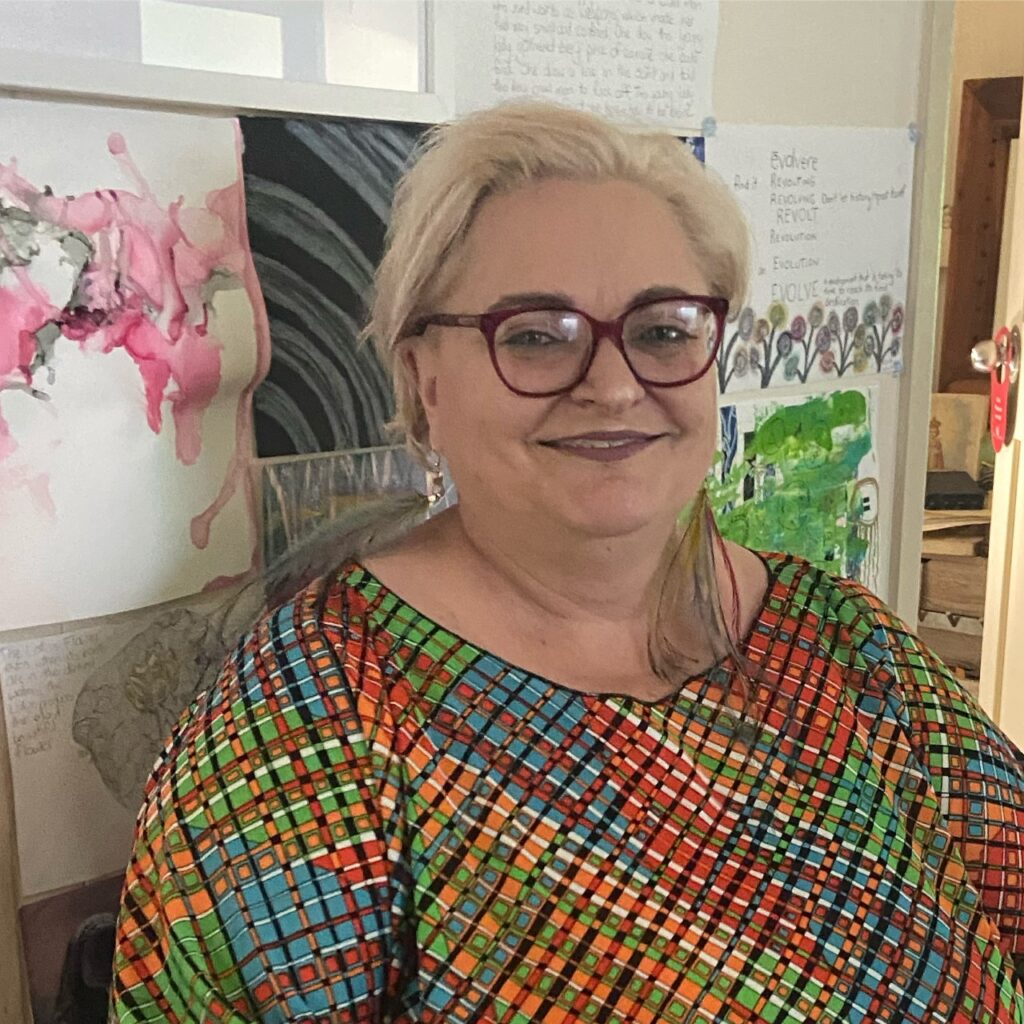By Laura Lewis
This post includes descriptions of suicide ideation and bullying.
It’s a firm fact that both autism and ADHD are a genetic neurotype we are born with. Being unaware of this in ourselves does not make us less autistic.
For most of my life I have hovered between feeling unique and thus maybe special (coping mechanism), feeling unique and that I must be a weirdo (inner ableism), thinking I don’t fit in, and thinking it was my fault or struggling with anxiety, depression and at times, paranoia.
My first diagnosis was post-natal depression in 2003. I am going to break this down further. I was living 1000km away from my close-knit family and was homesick and lonely. I had this beautiful baby who I thought was perfect. I made all his baby food using organic ingredients and he could not tolerate any type of solids. I blamed myself. I was doing something wrong. My baby was happy and content and could eat runny Farex and certainly loved his bottle. I was taught how to play with him because he only played with wheels. And you know what, I now believe there was nothing wrong with the way he played.
I insisted on flying back to my GP for the post-natal diagnosis. I didn’t trust myself. I felt it was important to see a GP who knew me well. He prescribed me with an anti-depressant that, over the next few years, I had to increase the dosage of as my tolerance to it increased.
Fast forward eight years. I was back living in my hometown, and I had a catastrophic breakdown. On 9 January 2011 amidst the torrential rain that devastated Southeast Qld, I was admitted into a private psychiatric hospital. This is a day I have no recollection of. I only know the timeline thanks to my husband and Mum sharing the events of that day.
In 2011 I had multiple admissions in this psychiatric hospital. In fact, I spent more of 2011 in hospital than at home. During one of those admissions my psychiatrist recommended electro convulsive therapy, as he felt we had exhausted all treatment options. When I look back over this period, this is the first time I wished I had my autism diagnosis. Of course, having it much earlier than 42 (my age in 2011) would have made my life easier; avoiding ECT is something I wish I could have chosen. That treatment has left me with a permanent short term memory impairment. Basically, an acquired brain injury.
2011 was also the year I was first really exposed to the nasty gossip mill of mothers at school. This played out at school and on social media. I witnessed some of it. It was painful, I became suicidal and developed an inability to trust most people. Cruel words by narrow minded women that made my world smaller. I was scared to venture out to my local shops and picking my kids up at school felt like entering a battlefield.
Laura, a middle aged white woman with blonde hair, standing on an oval. She is wearing a top and pants with whacky glasses and holding a large feather and white plastic bag in either hand.

It’s counterproductive to ruminate over how my life would have been with an earlier autism diagnosis. But it is equally hard to not wonder. Over the next five years I had more hospital admissions. When I was not in hospital, I attended two day programs a week. An outpatient service that I was very committed to. I saw my psychiatrist weekly. A mental health nurse visited me at home each week.
In hospital I was away from my husband and young children. At home I was practically institutionalised. I was working so hard on my recovery with the little knowledge I had. I spent a lot of time in bed when I was not at day programs. I was not living, and it was barely existing.
A few things happened around 2015. The women who participated in the gossip that nearly destroyed me, had moved on. They’d moved schools and left the area. I felt safe to venture out. My hard work on my recovery was paying off. My eldest child had faced terrible bullying at school, and I had to take action to protect him. This fierce protection instinct mixed with my strong sense of social justice was the boost I really needed.
I still had no knowledge of my neurotype. I still felt like the odd one out but shrugged it off as being the kind of person that was an acquired taste. I wish I’d realised that the netball mums were arseholes, and that I was not at fault and never had been. Realised that the isolation I felt in the school community was again due to a lack of an inclusive environment. Something that still exists now.
As I stepped up my advocacy and met other autistic adults, I realised I had found my people. I still thought I related better with them because I was parenting an autistic child. Remember, I was seeing my psychiatrist regularly, a psychologist at least fortnightly and my mental health nurse. This clinical team as little as five years ago had no knowledge or experience of autistic females.
I began to question my own neurotype. As my child grew older and I felt more and more familiar with autistic adults, I began to think I may be autistic. During this time, I still grappled with depression. My anxiety was increasing, and I’d also been diagnosed with c-PTSD.
As I started to self-identify as an autistic person, I raised this with my psychiatrist. His first response was to poo poo this. I really had to self-advocate. I explained the increasing numbers of women my age who were being diagnosed. I asked him to do some research. To his credit he did. He agreed I was autistic.
By this time my child was 18. We had raised him very much along the social model of disability. I felt angry about exposing deficits rather than scaffolding strengths. I found NDIS was as difficult to navigate as it was useful in supporting my son. This process saw me refusing to get a full diagnosis, believing the knowledge of what level of autism I was would hurt me more than help me. This is a fight or flight response more linked to my mental illness than my autism.
I struggle to ascertain where my autism ends, and my mental illness begins. Anxiety is most definitely a co-occurring condition. My paranoia is not. The hyper-vigilance I feel is not just from c-PTSD, but also something I can expect as an autistic ADHD person.
I have this trifecta of co-occurring conditions that can all as stand-alone diagnoses explain much of who I am, how I react and why I feel the way I feel. Yet combined I don’t know where one ends and where another begins.
I can at times be very capable of achieving amazing things. That does not mean I don’t pay a price for this. In between all the things I share publicly is the person who struggles so much and feels so much emotional pain that suicide is at the forefront of my mind. Let me assure you just because I think about it does not mean I’ll follow through. That is a legacy I will not leave my children. But thinking about it is painful and frightening.
To add to this is a lack of understanding around psychosocial and invisible disabilities. When I explain I feel unheard; when I explain I feel people are not open minded and in fact act defensively because I’ve asked for reasonable accommodations, I’m the one who feels bad. Feeling bad for a disability really does suck. I get accommodating an invisible condition is difficult, but why is it harder for me to receive reasonable accommodations, particularly when I’m prepared to wear the emotional labour to inform and educate? Many workplaces, schools and other places in our community have begun to understand the need to provide accommodations for people with visible disabilities – so why not those of us with invisible disabilities too?
I don’t ask for accommodations to make anyone feel bad. I ask for accommodations to help me function in society. I’m just trying to be a leader for myself and my family through self-advocacy, and yet I feel punished. How unfair is it for me to be punished for a disability I can’t control.
I’m a hot mess of confusion trying to single out and identify what is autism, what is ADHD and what is my mental illness. I don’t think I’ll ever figure this out. I think they are so closely linked that trying to separate each one is like cutting off one of my limbs. They are all equally very much a part of me.
When I or a person with an invisible disability tries to explain our disabilities, please understand we’re asking for support, not pointing fingers.

An image of Laura and her son standing in their driveway. They both have pale-skin and are wearing different black shirts, holding up a finger each to signify the number one. In front of them is a yellow recycling bin and green waste bin.
Laura received a late autism and ADHD diagnosis at 50 and believes her earlier mental illness diagnosis and presentation may have been avoided with an autism and ADHD diagnosis much sooner in her life. She parents an autistic 19-year-old and is building her art practice.

